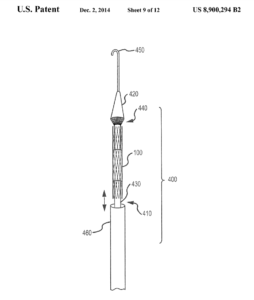Judgment Preservation Insurance: A Guide On How Litigation’s Safety Net Works & Why It Matters
Jul 24th, 2025 by Michael Dilworth | Recent News & Articles |
Litigation is unpredictable. Even strong cases can collapse on appeal. I’ve seen clients secure major verdicts, only to lose them months later through post-trial motions or appellate reversals.
This risk is especially hard on companies that have spent years and millions building a case. You win at trial, but then you’re stuck in limbo. The judgment may not hold. Legal costs continue. Business decisions stall.
In recent years, this risk has only grown. Courts are facing heavy backlogs and shifting procedural standards, especially in intellectual property and complex commercial cases. This uncertainty can lead to unexpected and unwanted financial exposure. It complicates planning, delays reporting, and can weaken negotiating positions.
This is where judgment preservation insurance becomes a powerful tool.
Subscribe to our Newsletter
What Is Judgment Preservation Insurance?
Judgment preservation insurance (JPI) is a specialized coverage that protects plaintiffs in the event that their favorable trial court judgment is reduced or reversed on appeal. Unlike traditional insurance that covers external risks, JPI addresses the systemic legal uncertainty that lingers after a trial victory.
JPI has evolved from the broader litigation insurance market. As companies increasingly treat judgments as financial assets, it makes sense to protect them. Courts can make procedural mistakes. Case law can shift. Appellate panels can see things differently. All of this puts the value of a judgment at risk.
What does JPI actually cover?
Judgment Preservation Insurance is designed to protect some or all of the value of a plaintiff’s trial court victory. Coverage generally applies when a judgment is either reduced or reversed during the appellate process.
Importantly, the policy pays out only once the judgment becomes final and non-appealable.
Coverage often applies in cases involving:
- Risky procedural issues like jury instructions or evidence rulings
- Large or complex damages awards
- Unsettled or novel legal theories
Most policies range from $5 million to $100 million in coverage. Premiums are paid upfront and depend on factors like the size of the judgment, strength of the appeal, and reversal trends in the relevant court. Policies usually require a self-insured retention between 10% and 25%.
How is JPI different from other litigation insurance options?
JPI focuses exclusively on preserving the value of a favorable ruling, unlike broader litigation insurance policies that may include fee shifting or indemnification. This sets it apart from:
- Adverse judgment insurance, which helps defendants cover losses if they lose at trial
- Appeal or supersedeas bonds, which secure payment but don’t guard against a reduction in judgment value
JPI is sometimes paired with litigation funding. When funders take on the cost of litigation in exchange for a portion of the recovery, they have a vested interest in maintaining the value of a trial win. In that context, JPI is part of a financial structure that gives funders confidence to invest by helping secure the funder’s return and strengthening the overall risk profile of the litigation.
How judgment Preservation Insurance Works in Practice
Here’s a fictional scenario to help explain what this looks like in practice.
MidTech, a mid-sized tech company, wins a $40 million patent judgment against a larger competitor. The trial court’s ruling is favorable, but the defendant files an appeal. One of MidTech’s damages experts is now under scrutiny, and the risk of reversal is real.
The general counsel meets with outside litigation counsel and the board. The priorities are clear: protect the value of the judgment and prevent the appeal from derailing other strategic goals. MidTech decides to purchase a JPI policy.
- Coverage amount: $30 million
- Self-insured retention: $5 million
- Premium: $3 million, paid upfront
The policy responds to a range of possible outcomes:
- If the judgment is fully overturned, the insurer pays out $30 million (less the retention and premium). MidTech avoids a total loss.
- If the award is cut to $20 million, the policy bridges the gap, preserving most of the original value.
- If the judgment is affirmed, MidTech collects the full amount, minus the cost of the premium.
More than just financial coverage, the policy gives MidTech leverage. It no longer has to settle out of fear. The business stays focused on growth while legal counsel handles the appeal with greater confidence.
A Real-World Reminder: Colibri v. Medtronic
While the MidTech scenario is hypothetical, the risks of post-trial reversals are all too real. Consider the recent Colibri v. Medtronic case as a stark example of what can happen when a favorable judgment isn’t protected.
In 2023, a jury awarded Colibri Heart Valve LLC over $125 million in a patent infringement suit against Medtronic’s CoreValve unit. The verdict followed years of litigation and significant investment in expert testimony, trial prep, and strategy. It was, by all appearances, a resounding win.
But in July 2025, the Federal Circuit reversed the entire judgment. The court ruled that Colibri’s patent claims – narrowed during prosecution – invoked prosecution history estoppel, meaning Colibri couldn’t rely on the doctrine of equivalents to support its infringement case. As a result, Medtronic was found not to infringe, and the entire $125 million award was wiped out.
For Colibri, that meant going from a major litigation victory to a total loss – no recovery, despite the jury verdict and years of effort.
We don’t know whether Colibri had judgment preservation insurance. But if they didn’t, the outcome was likely devastating. With JPI in place, Colibri could have recovered a substantial portion of the judgment, even after the reversal. Instead of zero, they might have walked away with tens of millions, funds that could have supported continued innovation or even litigation against other infringers.
The lesson is clear: even a strong trial win isn’t the finish line. Until a judgment survives appeal, its value remains at risk. That’s exactly the uncertainty JPI is designed to manage.
The Judgment Preservation Insurance Process
Securing judgment preservation insurance isn’t as simple as buying a general liability policy. It requires deliberate timing, credible legal positioning, and detailed due diligence.
How do insurers assess whether a judgment qualifies for JPI?
The process begins with a preliminary evaluation. Insurers assess the trial record, jury findings, expert testimony, and overall legal posture. They favor cases with clean trial procedures, strong factual findings, and robust damages calculations that can withstand appellate scrutiny.
What does the underwriting process involve?
Once a case clears the initial screen, the underwriting phase kicks in. This can take 4 to 8 weeks, depending on case complexity. Underwriters review trial transcripts, motions, appellate briefs, and may consult legal specialists to gauge risk. Their goal is to quantify the probability and scope of judgment erosion.
When should a company seek coverage?
Timing is critical. The ideal window for seeking judgment Preservation Insurance is soon after the verdict but before appellate briefs are filed. This gives insurers the clearest view of the issues without being locked into early positions. Delaying the process can limit options or increase premium costs.
When does the JPI policy pay out?
judgment preservation insurance coverage is triggered only after all appeals are exhausted. That includes intermediate appeals, rehearing requests, and petitions for Supreme Court review. Only once the judgment becomes final and unchallengeable does the insurer disburse payment, based on policy terms.
Benefits of Judgment Preservation Insurance
JPI is more than a risk-management tool. It gives companies financial control and strategic clarity at one of the most uncertain stages of litigation.
Reduces risk during appeals
Appeals introduce delay, cost, and the threat of reversal, even for strong cases. JPI limits that downside and protects what you’ve already won.
Enables faster monetization of judgments
With JPI in place, a judgment becomes a more secure asset. That can unlock financing options, attract litigation funders, or strengthen your hand in merger and acquisition discussions.
Improves settlement negotiating leverage
Defendants often use appellate uncertainty to drive down settlement value. JPI shifts that power dynamic by giving plaintiffs the ability to walk away from a low offer without risking everything.
Few policy exclusions
Most JPI policies are clean and straightforward. Aside from standard exclusions like fraud or misrepresentation, coverage tends to be broad and flexible.
Customizable coverage
JPI policies are tailored to the judgment, the case posture, and the appellate risk. Companies can choose how much to cover, how much risk to retain, and how to align the policy with their broader financial goals.
JPI Limitations to Consider
Judgment preservation insurance offers real protection, but like any insurance product, it has limits. Understanding those limits can help you decide whether it’s the right fit.
Legal fees are not covered
JPI doesn’t cover appellate attorney fees. Those costs stay on your balance sheet, regardless of the outcome.
No payout if the case settles
If you agree to settle for less than the original judgment, the policy doesn’t make up the difference. JPI is designed to protect final, enforceable outcomes, not previously negotiated ones.
No guarantee of collection
JPI covers judgment reduction, not defendant solvency. If the other party can’t pay, that’s a separate issue the policy doesn’t address.
Significant premiums
Pricing typically runs 5% to 15% of the coverage limit. Higher-risk cases may also face tighter terms or exclusions.
Protects value, not cost
Litigation is expensive, and JPI won’t reduce those expenses. What it does is protect the value of a win that may define the company’s future.
Strategic Considerations for Judgment Preservation Insurance
Judgment preservation insurance, when used appropriately, can be a powerful, strategic tool that helps companies align litigation outcomes with broader business goals.
Treat judgments as financial assets
The companies that gain the most from JPI see a favorable judgment as more than a legal win. They treat it as a financial asset that needs to be managed, protected, and leveraged to support the business.
Manage appellate risk like business risk
Appellate risk affects more than the final ruling. It shapes how companies report financials, negotiate partnerships, and engage with investors. When you can measure and transfer that risk, you gain the ability to make decisions based on business priorities, not on the fear of reversal.
Shape legal strategy with confidence
In IP cases especially, JPI can change how a company approaches appeal. With protection in place, legal teams can argue from a position of strength, pushing for higher damages or broader rulings without fearing the worst-case outcome.
Maintain a broader risk strategy
More companies are treating litigation as a business asset class, and JPI is one of the tools supporting that shift. It is a sign of maturity when legal and finance leaders evaluate coverage with the same discipline they bring to other high-stakes investments.
Closing Thoughts
Judgment preservation insurance is not right for every case. If the trial record is weak or the defendant is unlikely to pay, the policy may not be worth the cost. The key is an honest risk assessment. Does the potential protection align with your business objectives?
JPI won’t remove all litigation risk. But it will help manage that risk in a way that supports growth, protects value, and gives leadership the confidence to move forward.
When considering JPI, it’s important to work closely with experienced attorneys and advisors who understand both the legal posture of the case and the financial impact of the outcome. With the right structure and guidance, JPI can help turn courtroom victories into long-term business wins.
Any examples are solely for educational and illustrative purposes. They do not constitute legal advice and should not be construed as recommendations for specific actions. For personalized legal guidance, please consult a qualified attorney.
This article is for informational purposes, is not intended to constitute legal advice, and may be considered advertising under applicable state laws. The opinions expressed in this article are those of the author only and are not necessarily shared by Dilworth IP, its other attorneys, agents, or staff, or its clients.


